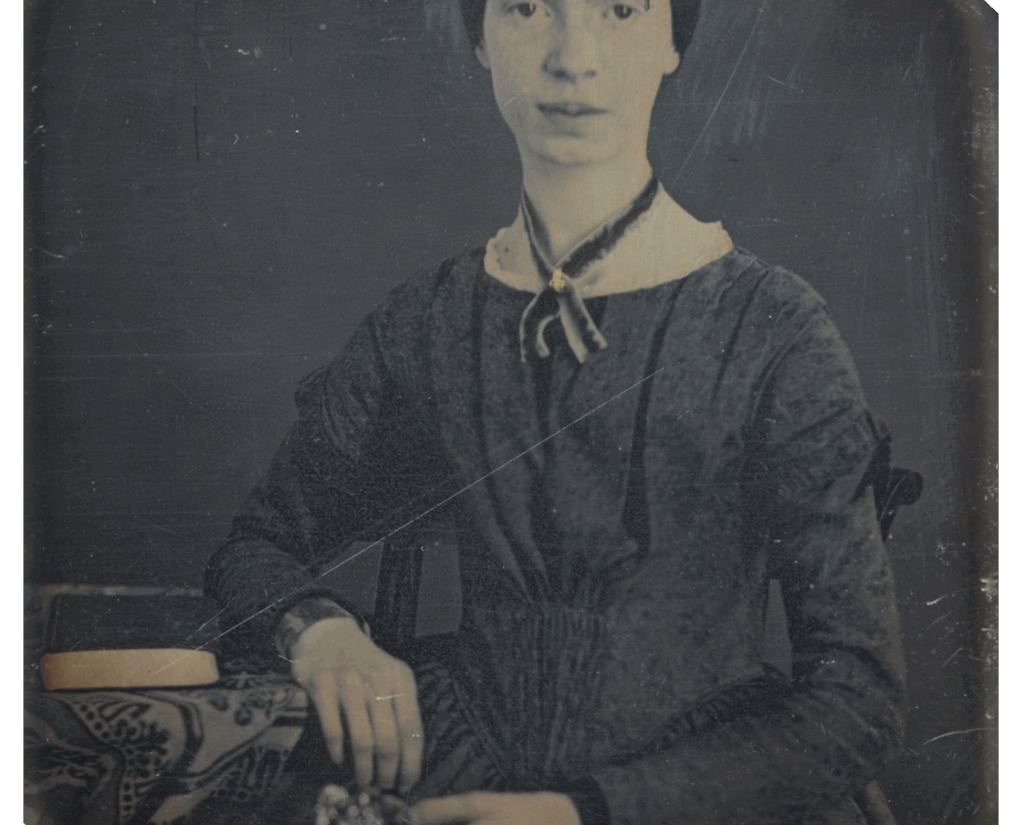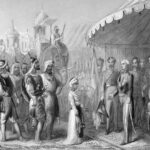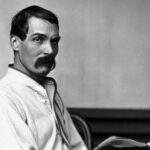 Public Domain
Public DomainWe often associate genius with collaboration—labs buzzing with colleagues, intellectuals debating in cafés, and scholars surrounded by stacks of books in ancient libraries. But some of the most transformative breakthroughs in history didn’t happen in a room full of people. They happened in near-total solitude. Whether by choice or necessity, these brilliant minds turned isolation into a crucible for creativity. Far from being a hindrance, solitude gave them the clarity, focus, and quiet they needed to go deeper than anyone else dared. These are the historical geniuses who did their best work while completely cut off from the world around them.
Isaac Newton
In 1665, the Great Plague forced Cambridge University to close, and a young Isaac Newton retreated to his family’s farm in Lincolnshire. What followed has become legendary: within just two years, he laid the groundwork for calculus, developed his theories on optics, and came up with the laws of motion and universal gravitation.
Working without guidance or collaboration, Newton filled notebooks with revolutionary ideas that would reshape physics and mathematics. His time in solitude was so productive it’s now referred to as his “annus mirabilis,” or year of wonders. In Newton’s case, enforced isolation became the perfect condition for genius. Without the distractions of university life or peer influence, he could test ideas freely, allowing his independent thinking to flourish.
Emily Dickinson
Emily Dickinson lived a life of extraordinary introspection. She barely left her family home in Amherst, Massachusetts, and over time, withdrew more and more from public life. She even communicated with some guests from behind doors or through handwritten notes. However, in recent years, it’s been suggested that she was far less reclusive than we previously thought.
During her seclusion, she wrote nearly 1,800 poems, only a few of which were published during her lifetime. Her style, often marked by irregular punctuation and slant rhyme, was radically ahead of her time. The emotional and philosophical richness of her writing came not from engagement with the outside world, but from turning inward. Her isolation gave her the quiet space to explore ideas and emotions with startling clarity. What might have looked like reclusion from the outside was, on the page, vibrant, daring, and deeply alive.
Nikola Tesla
Tesla is remembered for his remarkable contributions to electricity, magnetism, and wireless communication, but he’s also known for his solitary nature. He often avoided social events, refused to collaborate widely, and worked alone into the early hours in his hotel room or lab.
His routines were rigid and peculiar: he dined alone at the same time every day, performed repeated rituals, and developed his inventions with little outside input. Tesla’s solitary genius enabled him to dream up ideas well ahead of his time, many of which only gained recognition long after his death. He claimed he could visualise his inventions completely before building them, working out every detail in his mind. That kind of internal focus required, and thrived on, isolation.
Henry David Thoreau
Thoreau’s retreat to Walden Pond in 1845 wasn’t forced. In fact, it was a deliberate act of rebellion against materialism and the hustle of society. Living in a modest cabin he built himself, Thoreau spent two years immersing himself in nature, writing, and philosophical thought.
The result, “Walden,” became one of the most influential works in American literature, praised for its reflections on simplicity, self-reliance, and the human condition. Thoreau believed that by removing distractions, one could reconnect with deeper truths, and his time in solitude became proof of concept. He wasn’t just writing about nature; he was experimenting with a lifestyle that challenged everything urban society took for granted.
Blaise Pascal
Though a celebrated mathematician and inventor in his early years, Blaise Pascal withdrew from public life following a profound religious experience. He devoted his remaining years to theology and philosophy, living quietly and writing reflectively.
His notes eventually formed the “Pensées,” a powerful series of thoughts on the human condition, reason, and faith. His shift from scientific communities to solitude didn’t stall his brilliance, it simply redirected it. Pascal’s later work continues to shape religious and philosophical debate today. His musings weren’t idle thoughts; they were structured, deliberate explorations of human limitations, meaning, and the divine—all made possible by stepping away from the noise.
Ludwig van Beethoven
Beethoven’s life changed dramatically as his hearing deteriorated. The once social composer withdrew from many aspects of public life, retreating into himself as his condition worsened. He communicated using notebooks and avoided many of the people and places he once frequented.
And yet, in this state of enforced isolation, he composed some of his most celebrated music, including the Ninth Symphony and the late string quartets. These pieces are emotional, innovative, and deeply introspective—products of a mind forced inward but still reaching outward through music. The paradox of Beethoven’s late work is that while he was cut off from sound, he found a new language for expression—one that transcended his limitations and reshaped Western music.
Mary Anning
Mary Anning, a fossil hunter from Lyme Regis, spent most of her working life in solitude—not by choice, but because the scientific institutions of her time excluded women and people of her class. Armed with little more than keen observation and persistence, she made discoveries that transformed palaeontology.
From the age of twelve, she scoured the cliffs alone, uncovering creatures the world had never seen. Her finds, including the first correctly identified ichthyosaur, were groundbreaking. Though largely unrecognised in her lifetime, Anning’s work now stands as a cornerstone of evolutionary science. She educated herself through direct observation and hands-on research, often risking her life on unstable cliffs to extract fossils that would later rewrite scientific understanding.
Leonardo da Vinci (at times)
Although Leonardo da Vinci thrived at court and among patrons, he often withdrew into private study. Some of his most detailed observations on anatomy, hydrodynamics, and flight were recorded in notebooks never intended for publication.
These periods of retreat allowed him to test theories, sketch inventions, and write thousands of pages of ideas. His solitude wasn’t permanent, but it was key to his most speculative and visionary work. Much of what we admire today in da Vinci was conceived in the quiet of his private workshops. His notebooks reveal not just a prolific thinker, but someone whose curiosity thrived in the quiet corners of his mind, unbothered by societal expectations or peer review.
Grigori Perelman
One of the most brilliant mathematicians of the 21st century, Grigori Perelman solved the Poincaré Conjecture—a problem that had stumped experts for over a century. He did so entirely on his own, outside traditional academic institutions, publishing the solution online in a series of papers.
He declined all awards, including the prestigious Fields Medal and a $1 million prize, and has lived quietly in Russia ever since. Perelman’s extreme reclusiveness only amplifies the sense of awe surrounding his accomplishment. His story is a rare modern example of total intellectual isolation yielding global impact. It also challenges the assumption that collaboration is always superior; sometimes, the clearest breakthroughs come from minds left entirely to their own devices.
Emily Brontë
Emily Brontë’s life was defined by quietude and introspection. She lived with her siblings in the isolated Yorkshire moors, rarely socialised, and resisted efforts to enter more public life. Her emotional world was vivid, but her physical one was narrow.
“Wuthering Heights,” her only novel, was written under a pseudonym and met with baffled reviews at first. But its raw emotion and unconventional structure have since earned it a place among the greatest works of English literature. Brontë’s isolation allowed her to write something no one else would (or perhaps could) have imagined. She tapped into something deeply personal and wild, shaped not by literary trends or groupthink, but by her own fierce and solitary vision.
Franz Kafka
Kafka lived and worked in Prague, but much of his writing was done alone, in the early hours of the morning or late at night, when the rest of the world was quiet. Though he held day jobs and had friendships, his creative world was private and deeply internal.
Most of his work was unpublished during his lifetime, and he famously instructed his friend Max Brod to destroy his manuscripts after his death—a wish Brod thankfully ignored. Kafka’s isolated writing sessions gave us some of the most haunting, surreal, and psychologically rich literature of the 20th century. The fact that he never intended it for public consumption only underscores how personal, and potent, his solitary writing truly was.
Clearly, genius doesn’t always bloom in the spotlight.
For some, the absence of distraction, the silence of solitude, or the necessity of retreat created the ideal conditions for extraordinary thought. These historical figures remind us that working alone isn’t a limitation. It can be a creative force in its own right. Whether chosen or imposed, isolation became their ally in achieving something truly lasting. In a world that often values networking and constant engagement, their stories serve as a quiet reminder: sometimes, the most powerful ideas are born in silence.



